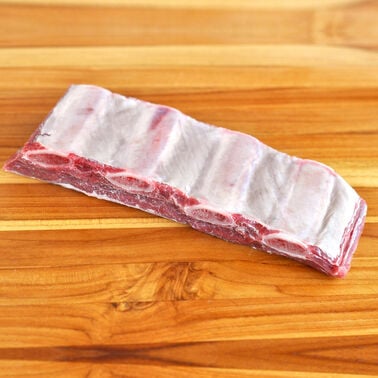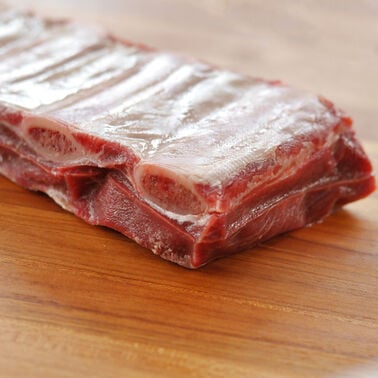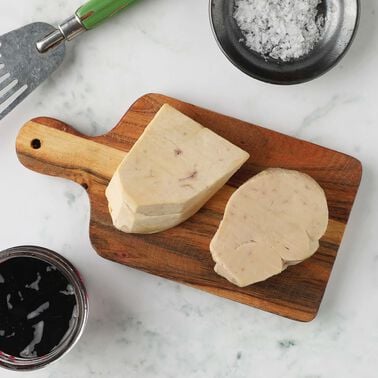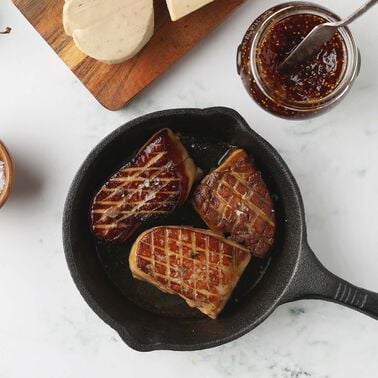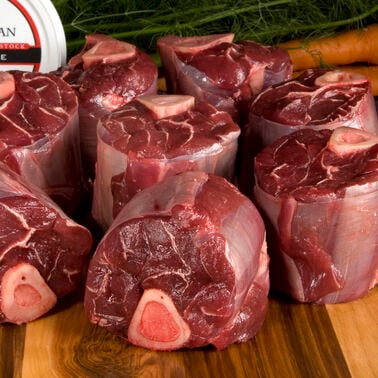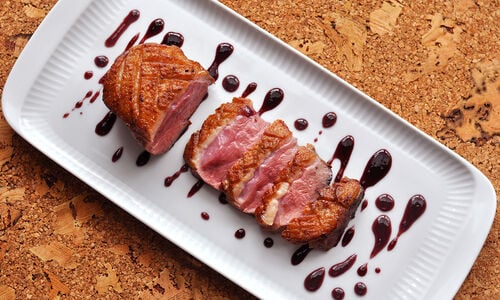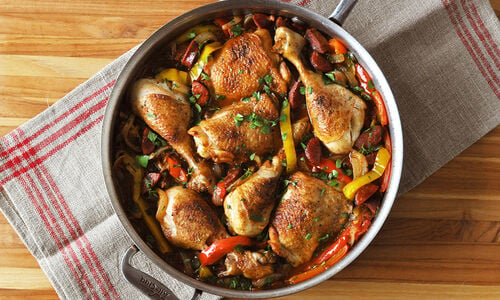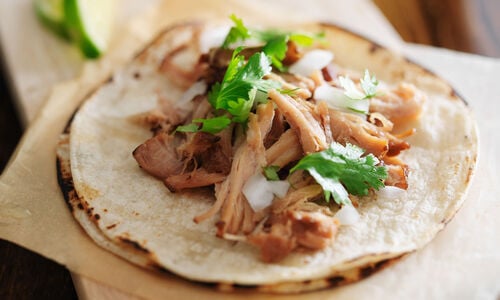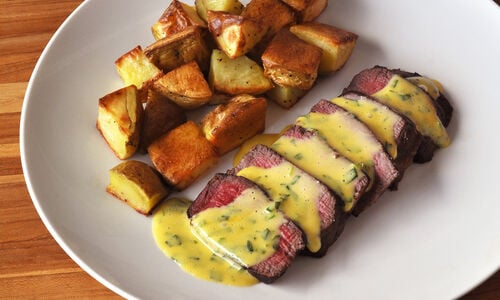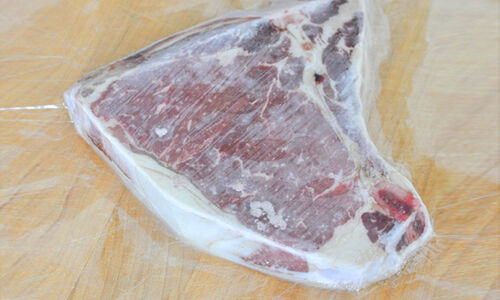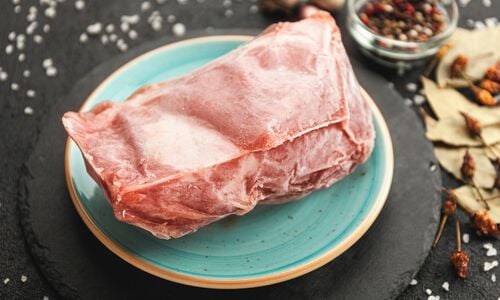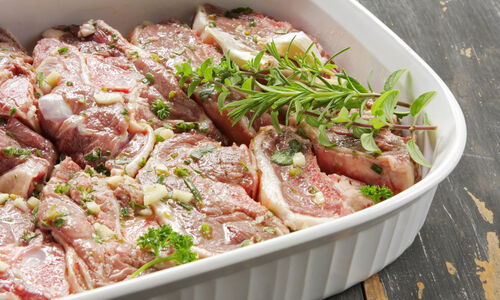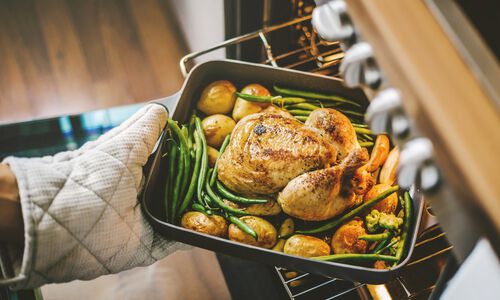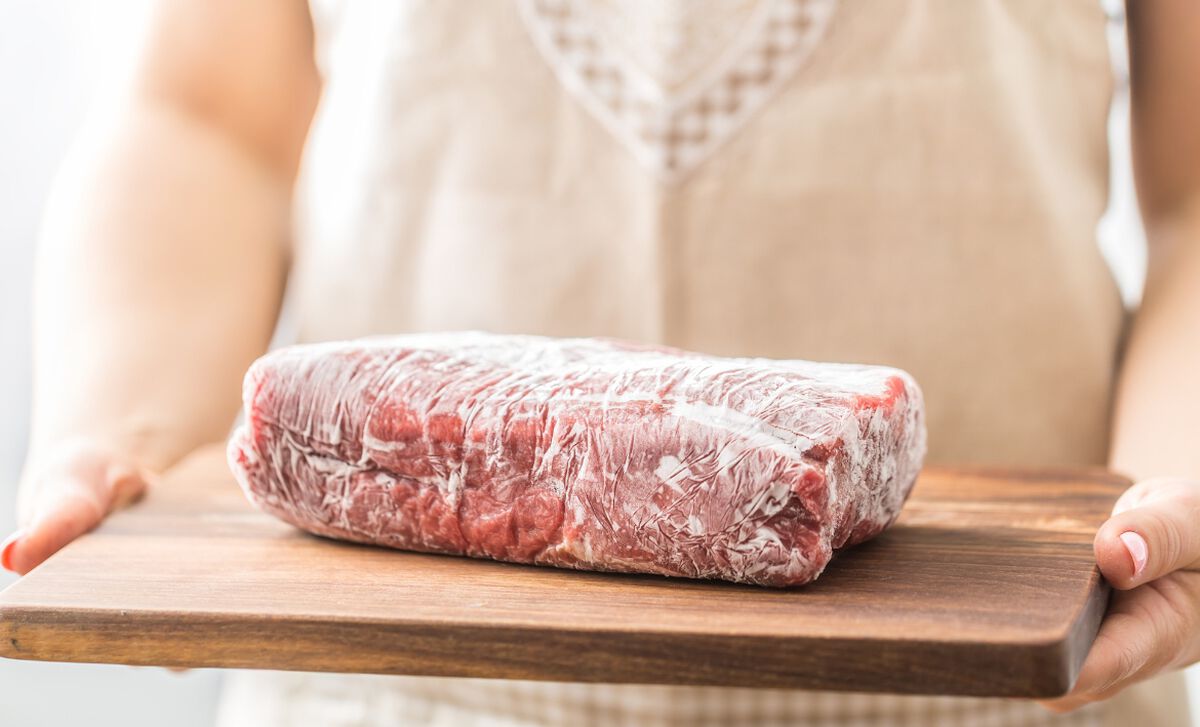
Don’t Get Burned
Unpleasant but not harmful, freezer burn occurs when air comes into contact with the food’s surface causing dehydration and oxidation. Meat contains thousands of naturally occurring water molecules. Water evaporates at all temperatures (even from what appears to be solid ice) so when water molecules migrate to the exterior of the meat, crystals of ice form on the surface. The parts now deprived of moisture become dry and shriveled. Exposure to air causes fats to oxidize giving freezer-burned meat brown or grayish spots and a leathery appearance. Temperature fluctuations in modern auto-defrost freezers contribute to freezer burn also. Meat with freezer burn, though dry and wrinkly is safe to eat however in most cases, freezer burn will lend an unpleasant flavor and texture. For lightly freezer-burned meats, trim away the dry, discolored portions and cook as usual. If your meat is heavily ‘burned’ it’s best to discard it.
Refreezing Meat
The USDA states that if food is properly thawed in the refrigerator, it is safe to refreeze it without cooking. From the USDA’s website, “After cooking raw foods which were previously frozen, it is safe to freeze the cooked foods. If previously cooked foods are thawed in the refrigerator, you may refreeze the unused portion. Freeze leftovers within 3-4 days. Do not refreeze any foods left outside the refrigerator longer than 2 hours; 1 hour in temperatures above 90 °F. If you purchase previously frozen meat, poultry, or fish at a retail store, you can refreeze if it has been handled properly.”
Freezer Failure
If you have a power outage or if your freezer ever fails – all may not be lost. According to the USDA, a freezer full of food will keep for about 2 days without power if the door is kept closed. A freezer that is half-full will keep for about 1 day. From the USDA’s website… “To determine the safety of foods when the power goes on, check their condition and temperature. If food is partly frozen, still has ice crystals, or is as cold as if it were in a refrigerator (40 °F), it is safe to refreeze or use. It's not necessary to cook raw foods before refreezing. Discard foods that have been warmer than 40 °F for more than 2 hours. Discard any foods that have been contaminated by raw meat juices.”
Quality Assurance in the Freezer
According to the USDA, frozen foods remain safe indefinitely. However, to ensure optimal quality there are some guidelines for storage times. Cooked meats retain quality for up to 6 months whereas uncooked meats, poultry, and game retain quality for up to 12 months.
